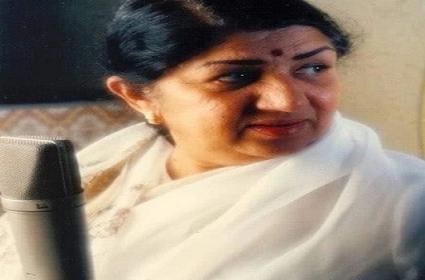When Lata Mangeshkar Refused To Sing

Ravi Valluri
The Bijou town of Mangeshi in the Goa-Konkan region of the verdant Western Ghats is famous for the powerful Goddess Mangeshi temple. The town is also known for the Mangeshkar family.
It was on 28 September, 1929 that a singing superstar was born to maestro Pandit Deenanath Mangeshkar and his wife Shevanti.
The young one was named Hema but soon rechristened Lata after Latika, a character in the dance-drama ‘Bhaaw Bandhan’ crafted by Deenanath Mangeshkar. And it was as Lata Mangeshkar that the demure girl was catapulted to fame.
She has been feted with prestigious awards like the Bharat Ratna, the Padma Bhushan, the Padma Vibhushan and the Legion of Honour, among others, for her contribution to the world of music. Gifted with a mellifluous voice by the Divine, Lata Mangeshkar is also known as “the Nightingale of India”, “the Voice of the Nation” and appellations like “Queen of Melody.”
In the backdrop of the Sino-India conflict, she rendered the eminently memorable and touching, “Aye Mere Watan Ke Logon” penned by Kavi Pradeep on 27 January, 1963. The entire nation and its visionary and charismatic Prime Minister Pandit Nehru were reduced to tears and wept in unison on hearing the composition.
Read: Riyaaz Makes Singing Worthwhile: Lata Mangeshkar
The music composed by C. Ramachandra. Such is the nationalistic fervour and strain in the rendition that to this day it never fails to invigorate the morale of the defence forces or the nation.
There is however a twist in the tale of this passionate and stirring recitation. The story goes that composer C. Ramachandra dreamed that the song be a duet by the Mangeshkar sisters, Lata and younger sibling, Asha. However, using her clout in the industry, the older sibling converted it to a solo performance.
What could have nudged this dark complexioned and timorous “Voice of the Millennium” to refuse to sing on certain occasions?
It is believed in the industry circles that differences cropped up between Bollywod’s two illustrious and celebrated singers over the issue of royalty on LP records. Following an ugly spat on the subject, Hindi cinema was deprived of duets featuring the sonorous Mohammad Rafi and euphonious Lata Mangeshkar, for five long years, between 1963 and 1967. The soured relationship was repaired by the enigmatic actress Nargis. A piqued Mohammed Rafi, though reconciled, coined the epithet “Maharani” for Lata Mangeshkar!
The soulful singer Lata Mangeshkar has a legion of followers and has sung innumerable songs. Estimates vary from 5,000 to 30,000. Despite her magical voice and a vast repertoire, the legendary Lata has been involved in several controversies, especially in the early part of her career.
It is also rumoured that she would threaten composers by opting out of a production in case they provided opportunities to fresh talent. Thus, harried producers and distributors went into a tizzy to placate the singer. There was apparently a seven year hiatus when Lata Mangeshkar declined to sing under the tutelage of the wizard, S. D. Burman.
The RK banner and actor-producer-director, Raj Kapoor have been associated with several blockbusters, which include “Sangam”. One of the songs in the movie was, “Main ka karu Ram mujhe buddha mil gaya.” The lyrics were penned by Hasrat Jaipuri but Lata Mangeshkar was critical of the words. Song-smiths Shankar- Jaikishen made valiant attempts to convince her to sing the song, which was to be filmed on Raj Kapoor and actress Vyjantimala. However, the singer found the lyrics puerile and refused to budge. It required enormous patience, several entreaties and a lot of placating by Raj Kapoor to make the “Maharani” concede. Eventually, Lata Mangeshkar did sing the song but refused to watch the filming of the song or even the blockbuster movie!
In her defence, Lata Mangeshkar argues that she never interfered in the working of music barons and was the only singer from the industry, who despite being unwell, went to listen to Bangladeshi singer Runa Laila. Further, she says she never tried to promote her brother, Hridyanath or her singer sisters, Meena, Asha and Usha.
Life is never hunky dory; not for any one. Having lost her father at a very tender age, she had the onerous responsibility of bringing up the family. The artiste in Lata Mangeshkar may have felt threatened at times by neophyte artistes and perhaps indulged in some politicking, but has always had the nation dance and swoon to her alchemy right from the soul stirring “Ayega, Ayega” from the gripping movie, Mahal to the tender and touching “Lukka Chhuppi” from the riveting Rang De Basanti.
Lata is an inestimable treasure of our nation who will always be venerated and remembered for her gargantuan contribution to Bollywood and Indian cinema.














